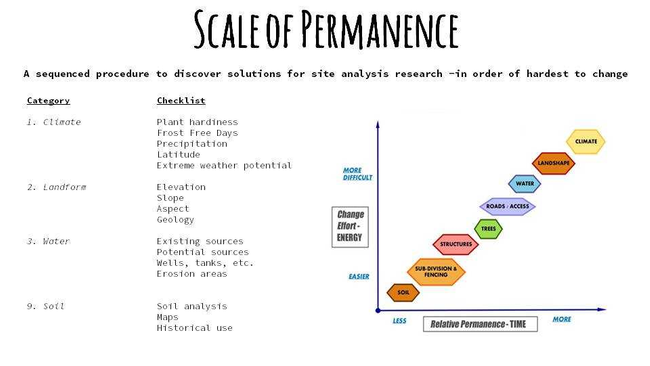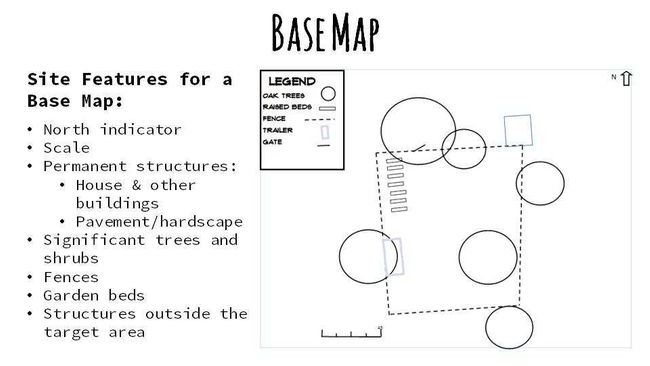By Laura Lukes, UC Master Gardener of Butte County, December 22, 2017.
On a piece of land near Oroville, the educators from Earthshed Solutions are walking their talk. Utilizing permaculture principles, they are designing “regenerative systems for food production, soil fertility, energy efficiency, and water conservation,” and for human and wildlife habitation.

At a recent Butte County Master Gardeners Workshop, Earthshed Solutions President Stephanie Ladwig-Cooper and Board members Brian Ladwig-Cooper, Robert Henry, and Anne Ainsworth demonstrated how they are transforming their vision into reality. This two-part Real Dirt series summarizes the information packed into their presentation.
Earthshed Solutions grew out of the original Chico Permaculture Guild that was founded in 2009. They aim to Educate – Motivate – Regenerate by teaching people to develop systems that mimic nature, that combine the needs of people and the environment, and that utilize agricultural practices that work with nature. More information is available on their website: www.earthshed.org
Permaculture was developed by David Holmgren, then a graduate student, and his professor, Bill Mollison, in 1978 as a “system of agricultural and social design principles centered around simulating or directly utilizing the patterns and features observed in natural ecosystems.”
Originally, “permaculture” combined the words “permanent” and “agriculture.” More recently the term is understood to blend “permanent” and “culture” because the culture in which humans are immersed dictates how we see, and subsequently treat, the world around us. The ethical considerations that underpin this philosophy are earth care (all life), people care (all human life), and fair share (returning surplus resources from whence they came and limiting consumption).
According to S. Ladwig-Cooper, the tangible rewards of this system lie in putting theory into practice. The bulk of the workshop focused on the permaculture design process and how it is being applied at the Earthshed Solutions property in Oroville. The educators shared their experience of going through the steps of the design process and remaining true to the principles of permaculture while emphasizing that the principles and their implementation are applicable at any scale and in any climate.
The process, although not strictly linear, begins with Goals, which are developed into a Wish List, followed by close Observation and Research, which dictate the Design Methods used to create a Concept Level Design, which becomes the basis of the Working Master Plan, leading to the final step, Implementation. “Final” is a misleading term, however, as continuous refinements and adjustments are made, based on ongoing observation and results.
What follows is an annotated outline of the steps they followed. The second article in this series will illustrate precisely how these theories and principles were applied to the property, the living lab in which permaculture is being practiced.
Of prime importance is the luxury of time: Henry and Ainsworth gave themselves a year to observe existing conditions on their property, paying attention to slope, natural features, wind and rain and frost patterns, water sources and flow, range of soil types (including drainage or lack thereof), animal activity, existing plants, and adjacent land use activities. While computer applications can help determine sun angle, soil composition, prevailing wind directions and the like, nothing beats observing and experiencing what actually happens throughout the year.
A logical and deceptively simple first step is orienting the plot of land in terms of the cardinal directions: a basic map will do. The aspect of the plot and its landforms in relation to north-south-east-west dictates the effects of wind, rain, water, sun, and shade.
The design process begins with setting GENERAL GOALS. Ask, and make note of, the following: What does this land need? What can it produce / grow? What is wanted / needed from this land? What are the skills and limitations (physical, financial, etc.) of the occupants?
Create a WISH LIST of SPECIFIC GOALS. For instance: grow ornamental / edible plants; provide wildlife habitat; raise livestock; identify areas for living and for recreation.
Next, start the process of OBSERVATION AND RESEARCH: Create a base map depicting seasonal patterns of wind, rain, and sun; natural formations with high and low spots; drainage courses; areas of shade and hot spots; animal migration / feeding / sleeping patterns; and prevailing wind directions and times of day.
Determine and choose DESIGN METHODS based on these observations. Analyze the “scale of permanence” by putting these elements in order, beginning with the element that is the hardest to change: climate; landforms; water; invisible structures (social and economic factors); access and circulation; vegetation and wildlife; microclimates; buildings and infrastructure; zones of use; soil; aesthetics; experience.
Complete a CONCEPT LEVEL DESIGN by utilizing some of permaculture's design methods: energy efficient planning, microclimate analysis, random assembly, Water / Access / Structure (WAS) design, relative location, and functional analyses for specific elements. Examine each existing and planned element, and determine the connections between these elements. Spark new ways of looking at each element and the overall design plan by connecting seemingly disparate elements through spatial concepts such as “attached to,” “beside,” “with,” “around,” “over,” and “in.”
After filtering the goals and wish list items through the permaculture principles and design methods, a WORKING MASTER PLAN will result from all of the above. Employ a process of elimination to refine the plan: how do initial goals fit with on-the-ground conditions? Filter design decisions by developing Strategies (actions used to achieve design goals) and Techniques (IMPLEMENTATION of the strategies with specific tasks).
Until Part Two of this summary of the presentation by Earthshed Solutions, keep this in mind: The core of permaculture is design and there is never a final design, only a working Master Plan. In this system, “you're always observing, interacting, and adjusting based on what the land tells you.”
